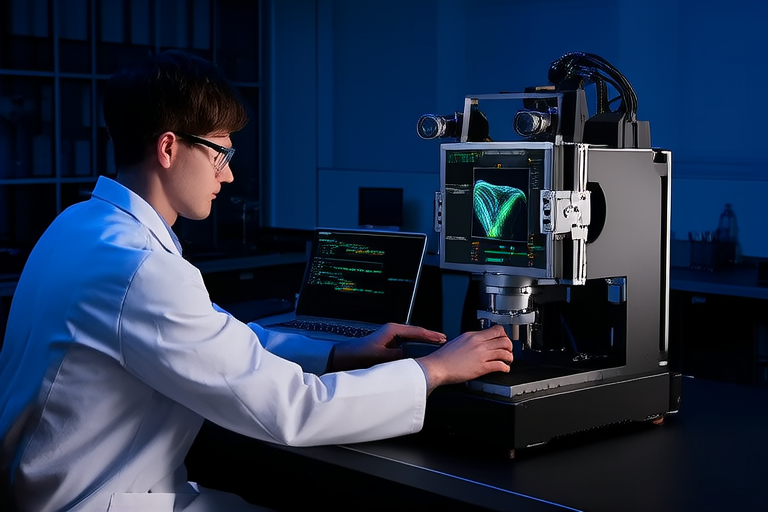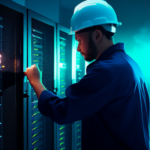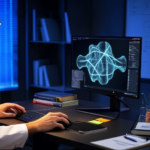Introduction
Computer vision, a field of artificial intelligence (AI), enables machines to interpret and understand visual information from the world around them. By mimicking human sight, computer vision systems can analyze images, videos, and other visual inputs to derive meaningful insights. This technology has rapidly evolved over the past decade, driven by advancements in machine learning and computational power. Today, it is transforming industries by automating processes, enhancing decision-making, and creating new opportunities for innovation. Its growing significance lies in its ability to unlock value from vast amounts of visual data, making it a cornerstone of modern technological progress.
How Computer Vision Works
At its core, computer vision relies on algorithms that process and interpret visual data. The process begins with capturing images or video through cameras or sensors. These inputs are then preprocessed to enhance quality and remove noise. Next, machine learning models, particularly deep neural networks, are employed to identify patterns, objects, and features within the data. Convolutional Neural Networks (CNNs), a specialized type of neural network, play a crucial role in image recognition tasks by breaking down images into smaller components and analyzing them layer by layer.
Image processing techniques, such as edge detection and segmentation, further refine the data to highlight relevant details. Through continuous training on labeled datasets, these systems learn to recognize specific objects, actions, or anomalies with increasing accuracy. While the underlying mathematics can be complex, the ultimate goal is simple: to enable machines to “see” and make sense of their surroundings in ways that mimic or even surpass human capabilities.
Applications Across Industries
Computer vision is revolutionizing a wide range of industries by addressing unique challenges and unlocking new possibilities. Below are some key sectors where this technology is making a significant impact:
Healthcare
In healthcare, computer vision is being used to improve diagnostics and patient care. For instance, AI-powered systems can analyze medical images such as X-rays, MRIs, and CT scans to detect diseases like cancer, fractures, or neurological disorders with remarkable precision. Tools like IDx-DR use computer vision to screen for diabetic retinopathy, enabling early intervention and reducing the burden on healthcare professionals.
Manufacturing
Manufacturing facilities leverage computer vision for quality control and automation. Cameras equipped with vision systems inspect products on assembly lines to identify defects or inconsistencies, ensuring high-quality output. Additionally, robots guided by computer vision can perform intricate tasks, such as welding or packaging, with speed and precision.
Retail
Retailers are adopting computer vision to enhance customer experiences and streamline operations. Smart shelves equipped with cameras monitor inventory levels in real-time, reducing stockouts and overstock situations. Facial recognition systems are also being explored for personalized marketing and cashier-less checkout systems, as seen in Amazon Go stores.
Agriculture
In agriculture, computer vision aids in crop monitoring and yield optimization. Drones equipped with cameras capture aerial imagery, which is analyzed to assess plant health, detect pests, and optimize irrigation. This data-driven approach helps farmers make informed decisions, boosting productivity while conserving resources.
Transportation
The transportation sector benefits from computer vision through autonomous vehicles and traffic management systems. Self-driving cars rely on vision systems to perceive their environment, recognize obstacles, and navigate safely. Similarly, smart traffic lights use cameras to monitor congestion and adjust signal timings dynamically, improving urban mobility.
Security
Security applications of computer vision include surveillance systems that detect suspicious activities or unauthorized access. Facial recognition technologies are increasingly deployed in airports and public spaces to enhance safety and streamline identity verification processes.
Benefits of Computer Vision
The adoption of computer vision offers numerous advantages across industries. One of the most significant benefits is increased efficiency. By automating repetitive tasks, businesses can allocate human resources to more strategic activities, driving productivity gains. Cost savings are another major advantage, as computer vision reduces the need for manual inspections and minimizes errors that could lead to costly rework.
Improved accuracy is another hallmark of computer vision. Machines can analyze vast amounts of data without fatigue, leading to consistent and reliable results. In fields like healthcare and manufacturing, this translates to better outcomes and higher-quality products. Enhanced safety is yet another benefit, particularly in hazardous environments where computer vision-equipped robots can perform dangerous tasks, protecting human workers from harm.
Challenges and Limitations
Despite its potential, computer vision faces several challenges that must be addressed to ensure widespread adoption. Data privacy concerns arise when sensitive information, such as facial images, is collected and processed. Ensuring compliance with regulations like GDPR requires robust safeguards and transparent practices.
Algorithm bias is another critical issue. If training datasets are not diverse or representative, computer vision systems may produce skewed or discriminatory results. This highlights the importance of ethical AI development and ongoing testing to mitigate biases.
Implementation costs can also pose barriers, especially for small and medium-sized enterprises. Developing and deploying custom computer vision solutions often requires significant investment in hardware, software, and expertise. Furthermore, technological limitations persist, such as difficulties in handling low-quality images, poor lighting conditions, or complex scenes with overlapping objects.
Future Outlook
The future of computer vision holds immense promise, with emerging trends set to expand its reach and capabilities. Advances in edge computing will enable real-time processing of visual data directly on devices, reducing latency and bandwidth requirements. This will pave the way for more responsive and scalable applications, particularly in IoT and robotics.
Integration with other AI technologies, such as natural language processing and augmented reality, will create richer, more immersive experiences. For example, AR glasses powered by computer vision could provide users with contextual information about their surroundings, transforming how we interact with the world.
As research continues, breakthroughs in unsupervised and self-supervised learning may reduce the dependency on large labeled datasets, making computer vision more accessible and cost-effective. Additionally, efforts to address ethical concerns and improve transparency will foster greater trust and acceptance among users.
Conclusion
Computer vision is undeniably reshaping industries and redefining what is possible in the realm of technology. From enhancing healthcare diagnostics to optimizing agricultural practices, its applications are vast and varied. By offering unparalleled efficiency, accuracy, and safety, this transformative technology is driving innovation and creating value across sectors.
However, realizing its full potential will require overcoming challenges related to privacy, bias, and accessibility. As advancements continue, computer vision will play an increasingly vital role in shaping the future of society, empowering businesses, and improving lives. Its journey is just beginning, and the possibilities are limitless.


